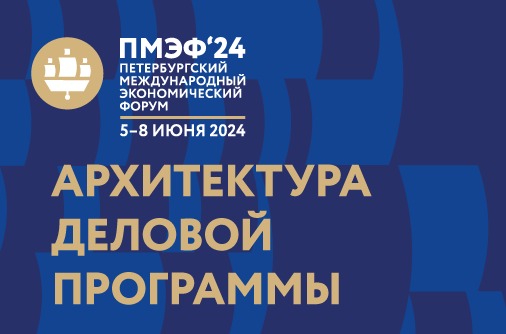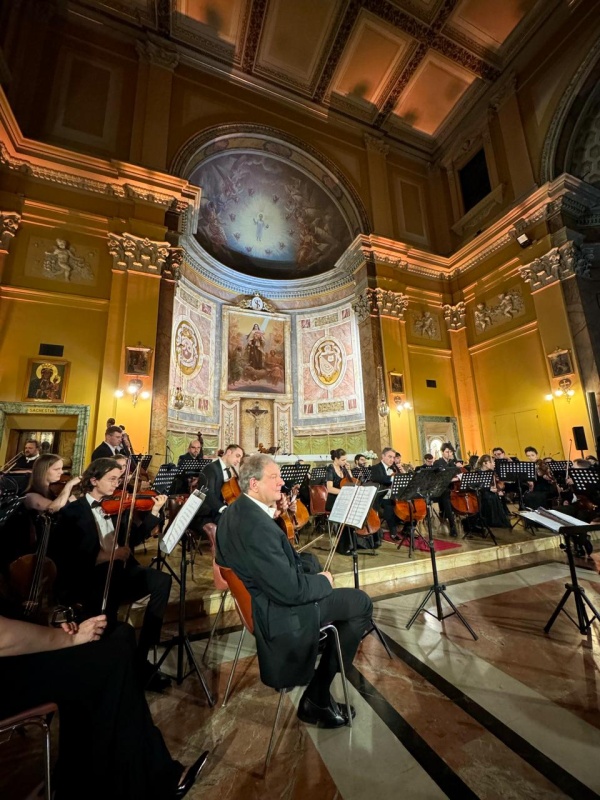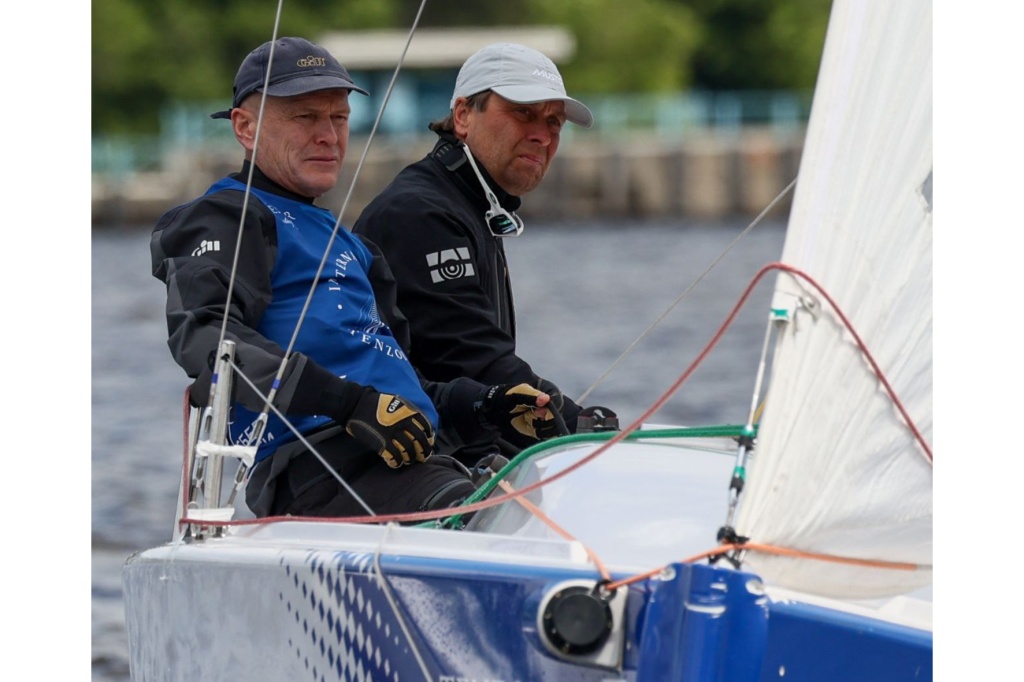
Chairman of the Board of the Roscongress Foundation: SPIEF has grown from a platform into a development institution
In an interview with TASS, Sergey Vyazalov spoke about the results of the latest St. Petersburg International Economic Forum and the outlook for the Year of the Made in Russia National Brand
The St. Petersburg International Economic Forum (SPIEF) gathered a record number of participants this year, with more than 14,000 businesspeople, heads of international organizations, government officials, experts, academics and journalists from 143 countries attending. Companies from the United States, Germany, China, Italy, Japan and other countries were heavily represented this year. Director General of the Ministry of Foreign Affairs of the Russian Federation, Chairman of the Board of the Roscongress Foundation Sergey Vyazalov told TASS about the key results of the Forum, why the Agency for Strategic Initiatives (ASI) and Roscongress Foundation had decided to declare 2018 the Year of the Made in Russia National Brand and how this would change the next Forum’s agenda.
1. The Agency for Strategic Initiatives and the Roscongress Foundation have decided to declare 2018 the Year of the Made in Russia National Brand. What is the aim here? What would it mean for the country and SPIEF 2018?
In our view, to make 2018 the Year of the Made in Russia National Brand is an effective strategic initiative in the best interests of the country and of extreme importance in light of the upcoming presidential elections. Today’s media agenda calls for new government-to-public communications formats ensuring impartial and transparent communications based on actual developments and results. That being the case, promotion of the national image driven by industrial, export, cultural, tourist and human potential would provide an excellent opportunity for showcasing what we have already achieved and what we can still do by way of real-life examples. Streamlining the efforts to promote the national image under such an umbrella brand will bring the country not only political but also financial benefits, as well as increased cost and resource efficiency. As for its value for SPIEF 2018, we are already integrating products united under the Made in Russia National Brand into all our events, which is expected to provide coverage for up to 100% of our political and business target audience.
2. Will the Year of the Made in Russia Brand be instrumental in shaping a national communications strategy?
A national communications strategy is long overdue. If you look at today’s efforts to shape and promote Russia’s image, you will see a wide array of federal executive authorities, government corporations, public organizations and associations, businesses, as well as producers, all giving a hand. The efforts lack consistency and a single concept, so each of the players continues with their own vision, with varying degree of success. The overall result is a failure to produce a strong image either within or outside the country. This is what a single national communications strategy strives to do: to harmonize all formats and approaches to promoting the country out there, create a powerful and appropriate information and visual impetus to achieve the common goal of creating a brand new image for Russia. The strategy will involve specific tasks and an evaluation system for assessing both communications and financial results. This is a comprehensive goal, and declaring 2018 the Year of the Made in Russia National Brand is an important tool for achieving it.
We are proposing not only to bring together the usual formats for themed years, but pursue certain lines separately, such as the Year of Entrepreneurship, the Year of Theatre, the Year of National Unity, and so on. As a result, the Made in Russia Year will equip the country with a unified communications strategy and provide advertising support for the national brand to the tune of RUB 1 billion through integration, and will help comprehensively promote all industries by way of themed years. We believe that such an approach tailored to fulfilling a variety of tasks within the scope of a single project would be the best and the most effective solution in the current political and economic situation. In conclusion, the special significance of the Made in Russia brand for the year 2018, which will determine the path for the nation’s development for the next five years, cannot be overstated.
3. What are the interim results of the Made in Russia National Brand project so far?
As of today, we have already received 458 bids to take part in the Made in Russia National Brand project and the number is increasing steadily by 8–12 companies a week. Nineteen of them have already launched branded products and 30 more are preparing to do so in the second and third quarters of 2017. Our plans are to engage over 1000 participants by the year-end and see the brand on the products and in promo materials of at least 100 companies.
4. Could you give us a summary of the SPIEF 2017 results? How was this year different?
This year, we pioneered a lot of new interesting formats that, in my opinion, proved a success. Alongside traditional panel sessions, roundtables, business lunches and TV debates, we came up with the new format of foresight series. The Russia–US roundtable meeting was brought back on to the SPIEF programme this year, confirming that US business is once again open to dialogue.
We are proactively searching for a more practical format for the sessions, one that implies open public discussions of matters of current interest opening up an opportunity for elaborating and presenting a solution on the spot. To illustrate, let take the most popular session of SPIEF 2017, Made in Russia: Creating a National Brand, which revealed a whole range of existing cooperation problems between concerned entities. In conjunction with the Agency for Strategic Initiatives, proceeding from the results of the session, we proposed creating a national communications strategy and declaring 2018 the Year of the Made in Russia National Brand.
The Forum’s main programme included 127 events. The day preceding the main programme was also particularly busy this time, with the 3rd Russian Small and Medium-Sized Enterprises Forum, the International Conference on Developing Cooperation ‘from Lisbon to Vladivostok’, World Sports Forum events, and the ‘Single-Industry Towns: New Opportunities for Business’ session held ahead of SPIEF.
Forum participants were also offered a number of new information services, including the SPIEF Summary service providing a recap of all substantial discussions at the St. Petersburg International Economic Forum, a concierge service for participants, as well as the SPIEF 2017 mobile app, complete with features allowing users to access the Forum programme and media events, submit questions for specific sessions, watch live streams, etc.
The Forum that started out as a platform has now emerged as a development institution with a record number of participants: over 14,000 business representatives, heads of international companies, officials, experts, researchers and journalists from 143 countries, including heads of 700 Russian and 400 foreign companies. Companies from the United States, Germany, China, Italy, Japan and other states were widely represented.
This year, 475 investment agreements, memorandums and agreements of intent were signed on the sidelines of the Forum to the tune of RUB 1.8 trillion (counting only agreements not bound by commercial secrecy).
5. How justified are the expenses involved in the Forum? How do they pay the Russian economy back?
SPIEF helps businesses develop, and businesses are ready to pay for that. Not only Russian businesses either. It is extremely important that only 2% of the Forum’s budget comes from the government. Furthermore, the SPIEF Forum covers not only the events of the three days of the Forum itself, but also a multitude of events in the months in-between, including international and regional promotion campaigns that help attract heads of Russian and foreign companies, media representatives and official delegations from all over the world to the Forum.
During the year of preparations for SPIEF, the Roscongress Foundation staged overseas events in such cities as Verona, Tehran, Tokyo, Davos and Hannover, as well domestic events in Yaroslavl, Ufa, Veliky Novgorod and Perm. Representatives of the SPIEF Organizing Committee took part in more than 700 events in Russia and abroad, attended by heads of federal executive authorities. We use such events to inform the authorities and business representatives of the unique opportunities the St. Petersburg Forum opens up for their investment and export projects. Without the preparations, the Forum could never be such a success.
I must also note that Founder and Executive Chairman of the Davos World Economic Forum Klaus Martin Schwab, with whom a cooperation agreement was signed during the Forum, said that SPIEF already surpassed the World Economic Forum in some respects. Indeed, this is true: the number of services offered to SPIEF participants outbids any other international platform, and the number of participants is rising accordingly by the year.
6. The Forum venue was decorated in the Russian avant-garde style. How did you reach this idea and did the Forum engage famous designers for this?
Russian avant-garde is not only the best-known Russian style, it is also a metaphor for change, technology and a drive for renewal. This is exactly why we chose it. The venue was designed in collaboration with the State Tretyakov Gallery and the State Russian Museum. Architect Yulia Napolova, who was contracted for the project, created a collage of fragments of paintings by Kazimir Malevich, Lyubov Popova, Alexandra Ekster, Vladimir Baranov-Rossiné, Alexander Rodchenko, Ivan Kliun and other Russian avantgarde classics.
7. Have you given any thought yet to the concept for the next SPIEF?
The next St. Petersburg International Economic Form will be held on May 24–26, 2018. We have a lot of ideas, but it would be wrong to voice any of them now without polishing them up first.
8. The Forum has been held at the new venue for two years now. What do the participants think of it?
The Forum was held at the ExpoForum Convention and Exhibition Centre, which is three times bigger than our previous premises (roughly 100,000 square metres, with 66,000 square metres of temporary structures). Proceeding from opinions voiced by SPIEF 2016 participants, this year the SPIEF Organizing Committee provided better exhibition opportunities, an increased number of conference rooms, business networking and lounge areas, and revisited its catering services. Without doubt, this helped the guests and participants to manage their schedules during the Forum more efficiently.
Compared to last year, the venue’s transport accessibility also improved. The city authorities built additional interchanges and upgraded the overall road infrastructure. I should also note that St. Petersburg residents also use the infrastructure on a daily basis.








